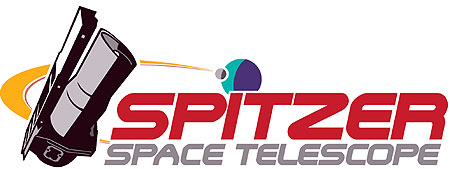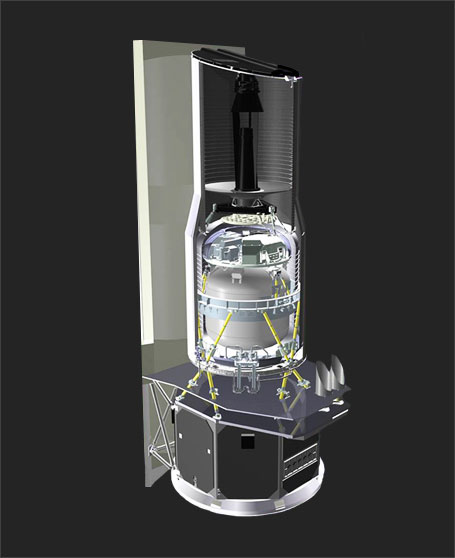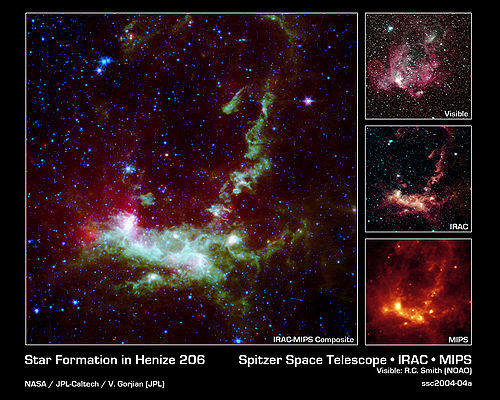Spitzer Space Telescope
Courtesy NASA/JPL-Caltech

The Spitzer Space Telescope (SST) is an infrared space telescope launched in 2003 named after the scientist Lyman Spitzer, Jr. It is the last telescope in NASA's Great Observatories Program which also includes the Hubble Space Telescope, Compton Gamma Ray Observatory and the Chandra X-ray Observatory. The planned mission was to last 2.5 years with an expectation that the mission could be extended an additional five years beyond that time when it was expected that the liquid helium cooling the instruments would run out. Two of the instruments in the IRAC camera are still in operation and can operate with the same approximate sensitivity as before the coolant ran out. These will continue to be used in what is known as the Spitzer Warm Mission.
The SST is in a heliocentric orbit known as an earth-trailing orbit--it trails the earth in its orbit around the Sun. It trails at a distance such that Spitzer's sensitive instruments aren't saturated by the IR given off by the Earth and only needs to avoid pointing towards the Sun instead of having to avoid both the Earth and Sun. Spitzer cannot point any closer than 80 degrees from the Sun because the solar panels cannot shield the instruments from the intense sunlight at any angle smaller than 80 degrees to the Sun. Likewise, Spitzer cannot point anymore than 120 degrees from the Sun as then the solar panels do not receive enough sunlight to operate.
Cryogenic Telescope Assembly
The telescope is a lightweight reflector of Ritchey-Chrétien design. The primary mirror in the telescope is 85cm in diameter (f/12) and made of beryllium. The telescope weighs less than 110 lbs and is designed to operate at extremely low temperatures.
There are three instruments in the multiple instrument chamber consisting of: (1) an Infrared Array Camera (IRAC), (2) an Infrared Spectrograph (IRS), and the (3) Multiband Infrared Photometer for Spitzer (MIPS).
- IRAC is an infrared camera which operates simultaneously on four wavelengths (3.6 microns, 4.5 microns, 5.8 microns, and 8 microns). Each module uses a 256x256-pixel detector. The two shortest wavelength bands are still operational even after the cryogenic fuel ran out and continue to operate as part of the Spitzer Warm Mission.
- IRS is an infrared spectrometer with four sub-modules which operate at the wavelengths 5.3–14 µm (low resolution), 10–19.5 µm (high resolution), 14–40 µm (low resolution), and 19–37 µm (high resolution).
- MIPS consists of three detector arrays in the far infrared (128 × 128 pixels at 24 µm, 32 × 32 pixels at 70 µm, 2 × 20 pixels at 160 µm). The 24 µm detector is identical to one of the IRS short wavelength modules.
Discoveries
- STARS
- PLANET FORMING DISKS
- EXOPLANETS
- GALAXIES AND THE ORIGINS OF THE UNIVERSE



